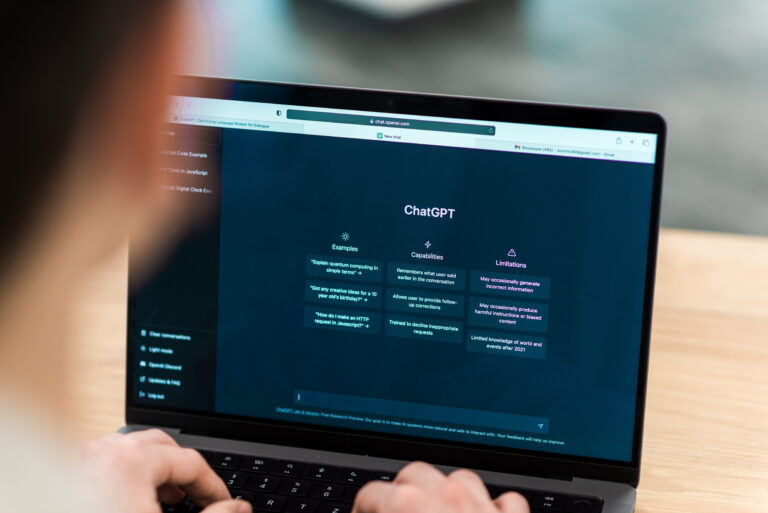
Introduction
We are living through one of the most fascinating technological moments in decades. The race to dominate generative artificial intelligence (AI) has accelerated, and few rivalries capture it as vividly as the one between Google and Meta. From our perspective, this is not just a contest between two corporations—it’s a battle that will help define how intelligence, creativity, and information flow in the digital age.
Generative AI has moved from novelty to necessity. In only two years, it has transformed from experimental chatbots into the core of entire business strategies. Google, once the undisputed leader in search and information access, now faces the challenge of reimagining its own empire through AI. Meta, on the other hand, is reinventing itself after the metaverse hype faded, betting that open-source AI could become the next great platform shift. Both companies know what’s at stake: whoever builds, scales, and integrates the most powerful models will shape not only markets but the way billions of people interact with knowledge and creativity.
A new phase in the AI arms race
In 2025, both companies have intensified their efforts. Google’s Gemini models continue to evolve toward true multimodality—combining text, image, audio, and video into a single intelligent system. The company has integrated Gemini across its vast ecosystem, from Android to Workspace, YouTube, and Cloud AI. The goal is clear: make Google’s generative tools as omnipresent as its search bar once was.
Meanwhile, Meta is pursuing a radically different path. Through its LLaMA series of open-weight language models, Meta has embraced an open-source strategy. Instead of locking AI behind proprietary walls, it aims to empower developers, researchers, and creators worldwide. In 2025, Meta expanded this ecosystem by launching LLaMA 4, improving performance and accessibility, and investing heavily in Scale AI, a company specialized in training data and infrastructure. The message is simple: if Google wants to dominate AI through scale, Meta wants to dominate it through openness.
Why this race matters
From our viewpoint, this is more than a corporate rivalry—it’s a competition over the future of intelligence itself. Whoever leads in generative AI will shape the next wave of tools, assistants, search engines, and creative platforms. When Google embeds its models deep inside search, it’s not just about better results; it’s about redefining how we find and trust information. When Meta integrates AI into Instagram, WhatsApp, or Facebook, it’s about transforming how we express ourselves, create, and communicate.
There’s also a strategic layer of power. Control over AI infrastructure—the chips, data centers, and training pipelines—is becoming as critical as controlling oil once was. Recent reports from WebProNews note that Google and Microsoft currently lead in cash flow for AI infrastructure, while Meta is investing aggressively to close the gap. Every new model requires more compute, more data, and more energy—resources only a few tech giants truly command.

Google’s strategy: integration and infrastructure
Google’s approach feels deliberate and methodical. It is building a vertically integrated AI stack: proprietary models, custom chips (TPUs), global data centers, and a massive developer ecosystem. By embedding AI into products people already use daily—Docs, Gmail, Android, Chrome—it ensures adoption without friction. The company’s goal is not only to dominate AI research but to make its presence invisible and indispensable in everyday life.
In parallel, Google’s Gemini 2 has introduced real-time multimodal reasoning, positioning itself as a direct competitor to OpenAI’s GPT-5. By merging its research divisions DeepMind and Brain under one umbrella, Google unified its AI leadership, signaling that this technology is no longer experimental—it’s strategic.
Meta’s counter-move: openness as power
Meta’s philosophy couldn’t be more different. Instead of building a closed ecosystem, it’s betting on open models as a long-term play. The company believes that if enough developers build on its LLaMA family, the collective innovation of the open community will outpace any proprietary system. This “open-weight” strategy has already attracted researchers, startups, and even governments seeking transparency in AI development.
However, openness also carries risk. Open models can be misused, and the responsibility for monitoring them is diffuse. Yet Meta insists that democratizing access is the only way to balance the power concentrated in a few private labs. From our point of view, this makes Meta’s bet not just technological, but ideological—a vision of AI as a public infrastructure rather than a corporate asset.
Challenges ahead
Despite their advances, both Google and Meta face serious challenges. Monetization remains uncertain: how to turn vast AI investments into sustainable profit? While Google can integrate paid features across its services, Meta’s ad-based model depends on user engagement, not enterprise adoption.
There’s also the issue of ethics and regulation. Governments in Europe and the United States are drafting laws on data usage, content provenance, and AI transparency. As these models become more capable, public scrutiny intensifies. Both companies must prove not only that their AI is powerful, but that it’s safe, fair, and aligned with human values.
Finally, there’s the matter of differentiation. When all models can generate text, images, or code, success will depend less on size and more on purpose: who integrates AI more naturally into daily life? Who builds tools that genuinely enhance human creativity rather than replace it?
The ecosystem effect
From our perspective, the most fascinating outcome of this race is the rise of the developer ecosystem. Google’s API strategy is designed to pull startups and enterprises into its orbit, offering tools through Google Cloud. Meta, on the other hand, encourages developers to train and fine-tune its open models independently. Both know that whoever attracts the broader ecosystem—developers, creators, educators—will ultimately shape how generative AI evolves.
Behind the scenes, both are also investing heavily in semiconductors and energy efficiency, aware that the future of AI won’t only be about intelligence, but sustainability. Reports from TokenRing and MarketMinute highlight that access to specialized chips is now one of the key competitive differentiators in the global AI landscape.
A human perspective
From where we stand, it’s impossible to see this as just a technical contest. The race between Google and Meta reflects something deeper about us as a society—our need to innovate, to create, and to understand. AI is not just changing the tools we use; it’s reshaping our relationship with information, with work, and even with imagination itself.
We believe the companies that succeed will be those that see AI as an amplifier of human potential, not a replacement for it. The real question is not which model is smarter, but which company better understands the people using it.
Conclusion
The rivalry between Google and Meta is redefining the future of generative AI—and by extension, the future of the internet. From our perspective, this competition is both exhilarating and unsettling. It drives innovation at an unprecedented pace, but it also concentrates power in a few hands.
The coming years will test whether these giants can balance progress with responsibility, innovation with ethics, and profit with purpose. If they succeed, generative AI could become one of the greatest enablers of creativity and human expression we’ve ever seen. But if they fail, we may face a future where information, imagination, and identity are shaped by a handful of algorithms.
As we watch this race unfold, one thing feels certain: the story of AI will not be written by machines alone—it will be written by us, the humans who choose what kind of intelligence we want to create, and what kind of world we want it to serve.



